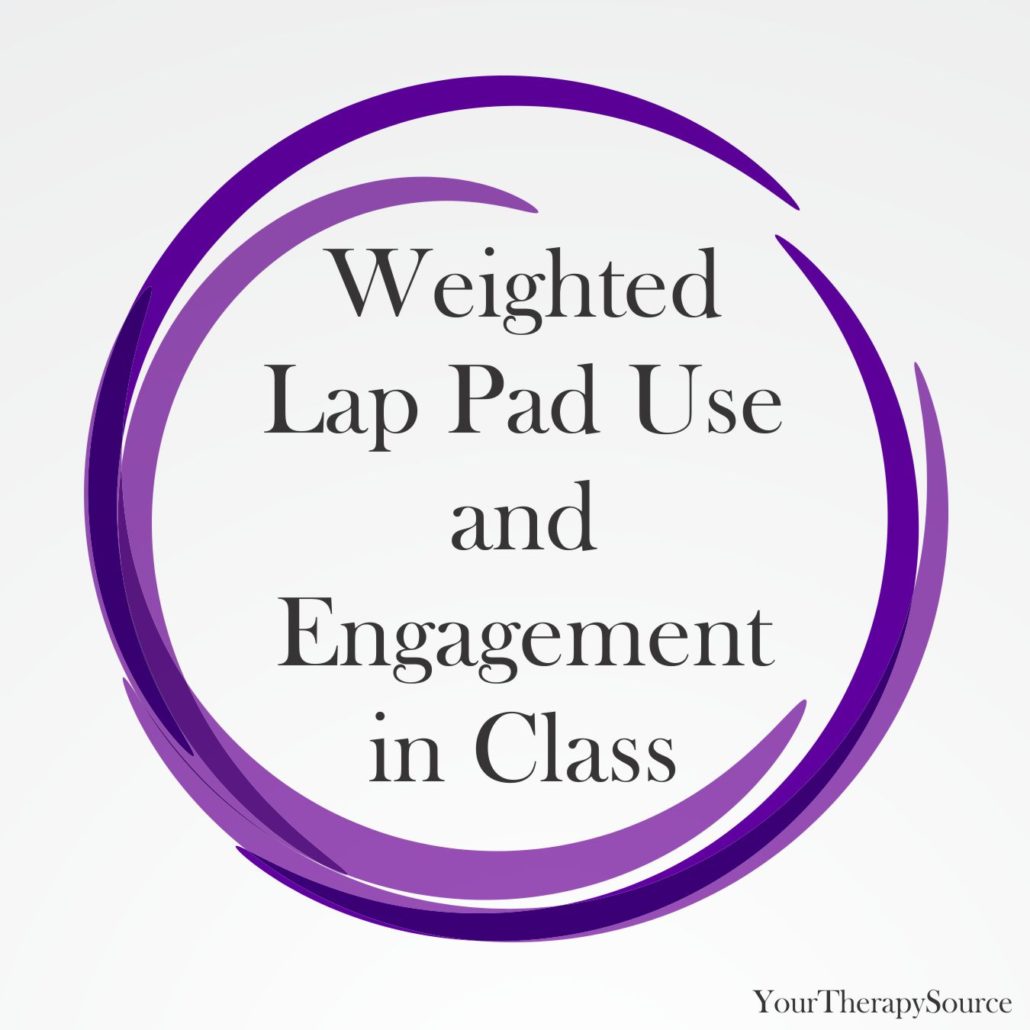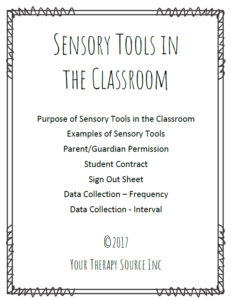Weighted Lap Pad Use and Engagement in Class – Single Case Study Research

Focus on Autism and Other Developmental Disabilities published a brief report on weighted lap pad use and engagement in class for a kindergarten student with autism spectrum disorder. The purpose of the study was to determine if a weighted lap pad intervention or an evidence-based practice of a structured work box intervention would result in improved engagement in a large group math activity.
Previous research indicated that weighted blanket use did not result in therapeutic behavior changes and student engagement was lower when compared with baseline.
Methodology and Data Collection
An alternating treatments single case research design was used to evaluate each intervention (weighted lap pad and structured workboxes) relative to the other and to a baseline condition. The lavender scented, weighted lap pad was 9.2% of the student’s body weight and was 0.3 m x 0.3 m. It was placed on the student prior to counting, instruction, and student participation opportunities.
For the structured workboxes intervention, there were three workboxes used that included one activity each to match instruction in the classroom.
Data collection was based on predetermined levels of engagement and
The interventions were measured with video using momentary time sampling with 10 second intervals.
Results of the Study on Weighted Lap Pad Use and Engagement in Class
Baseline data
- the structured workboxes intervention resulted in consistently higher levels of engagement than the weighted blanket or baseline conditions (80%–100% engagement).
- the weighted lap pad intervention resulted in counter-therapeutic levels of engagement relative to the baseline condition (2%–16% of intervals).
Conclusion
The researchers concluded that the weighted lap pad did not result in therapeutic behavior change in the student with autism spectrum disorder. Student engagement was actually lower when compared with
This single subject study provides therapists with valuable information regarding data collection. It is important to determine if any sensory strategy that is utilized in a classroom is beneficial to the student’s educational progress. By collecting detailed baseline information, establishing measurable outcomes, and determining how you measure the outcomes all prior to the intervention can provide valuable insight into how a student can benefit from sensory strategies in an educational or home setting.
Check out Sensory Tools in the Classroom to determine if the sensory tool is helping the student to achieve the goal, desired behavior or outcome.
Reference: Zimmerman, K. N., Ledford, J. R., & Severini, K. E. (2018). Brief Report: The Effects of a Weighted Blanket on Engagement for a Student With ASD. Focus on Autism and Other Developmental Disabilities, 1088357618794911.
Read more on:
Weighted Pencils and Handwriting
Effects of Weighted Blanket on Sleep Problems
Weighted Vests and Challenging Behaviors
Effects of Weighted Vests on Engagement




